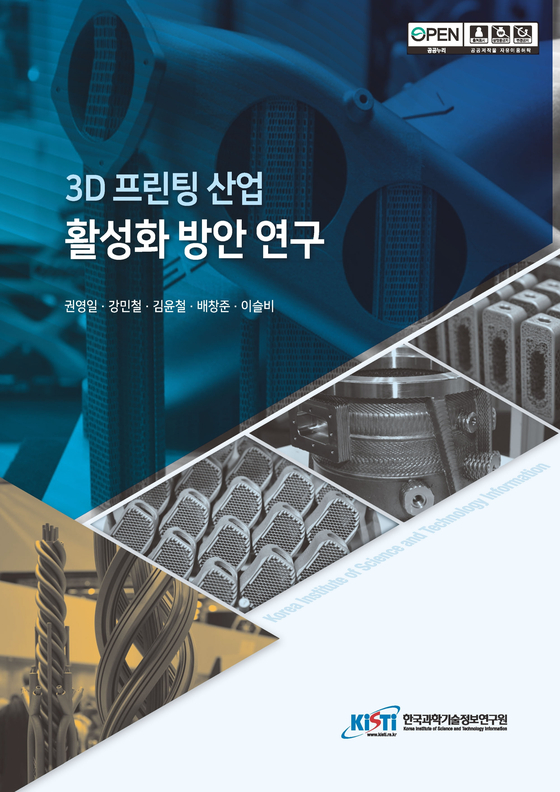
The Korea Institute of Science and Technology Information (President Jaesoo Kim, hereinafter referred to as KISTI) published a booklet on the ‘3D printing industry activation plan’ on March 23.
Experts in machinery, metals, polymers, and ceramics have published a book covering all information on 3D printing technology and materials. The fragmentary technology of 3D printing was introduced in various media and remained at the conceptual stage, but the booklet published this time is systematically organized by technology and material so that the recent trends can be understood.
Kwon Young-il, senior researcher at the Korea Institute of Science and Technology Information, Kang Min-cheol, executive director of 3D Printing Research Association, Kim Yun-cheol, professor of Chemical Engineering and Polymer Engineering at Sungkyunkwan University, Bae Chang-jun, senior researcher at the Korea Institute of Materials Research, and Seulbi Lee, postdoctoral researcher at Pusan National University.
Although 3D printing is active domestically and internationally, this book is designed to provide a clear view of the principles, materials, software, and application fields of 3D printing in the absence of related specialized books.
Looking at the main contents, the reason why 3D printing, which is called the digital revolution of the manufacturing system along with the 4th industrial revolution, is attracting attention is that it is highly likely to bring about the transformation of the traditional business model along with the innovation of the existing manufacturing method. 3D printing is a method of stacking materials one by one, and the business model is expanding from the existing manufacturer-centered to the consumer-centered because consumers can directly input and order requirements as data through the Internet platform and make orders by individuals. The 3D printing business model is expected to coexist in a complementary relationship with the traditional business model.
The global market size for 3D printing is expected to grow every year and reach 26.2 billion dollars (about 29 trillion won) in 2022. Currently, in the global 3D printing industry, a number of foreign companies such as the United States, Japan, China, and Europe are leading the business based on their technology, and they are taking the lead in product commercialization by applying 3D printing to the manufacturing process.
In the case of the domestic market, it has been used for manufacturing prototypes in the fields of education, aerospace, and automobile parts manufacturing over the past several years, and is being used in the production of finished products, mainly in medical, dental, and consumer goods. Although the market growth rate has been somewhat sluggish so far, the government is actively discovering successful cases to raise the market size to 1 trillion won by 2022.
Recently, the on-site introduction of 3D printing technology to improve the production process is increasing, mainly by automakers. In addition, although the current market share of the world’s leading companies is high, the industrial structure is rapidly changing due to the expansion of collaboration between start-up companies and global manufacturing companies, so there is a possibility for us as well.
This booklet will be published in the form of an e-book on the KISTI website to spread 3D printing.
Online JoongAng Ilbo
![]()
